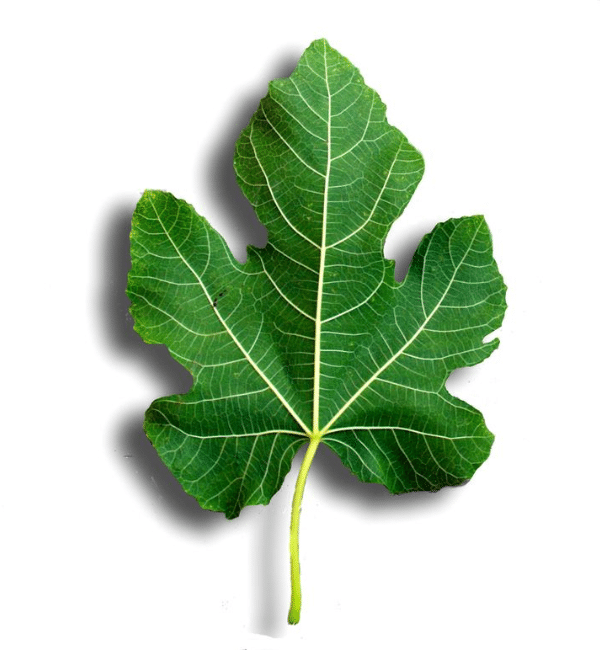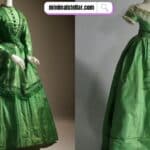Fashion is a constantly evolving expression of culture, values, and creativity. It draws from various influences, including history, art, and nature. Among the many fascinating elements that have found their place in the annals of fashion, the fig leaf holds a unique position. This simple yet symbolically rich natural element has transcended its biblical and artistic roots to become an enduring icon in the realm of clothing and design.
But where fig leaves first came into fashion is a journey that bridges ancient symbolism with modern trends. This article delves into the historical significance, cultural interpretations, and modern-day applications of the fig leaf in fashion, offering insights into how it has shape and been shape by human civilization.
The Symbolism of the Fig Leaf

The fig leaf is steep in symbolism, most notably tied to modesty and human vulnerability. Its first mention in recorded history appears in the biblical story of Adam and Eve. After eating the forbidden fruit, Adam and Eve became aware of their nakedness and used fig leaves to cover themselves. This act marked the beginning of the fig leaf’s association with modesty and the human desire to conceal one’s physical self.
Beyond religious texts, the fig leaf became a symbol of propriety in various cultures. Its placement in art and sculpture has often been used to veil nudity while maintaining the aesthetic integrity of the piece. This symbolic connection between the fig leaf and human modesty would influence its role in fashion and art for centuries.
The Ancient Use of Fig Leaves in Fashion
Early Civilizations: The Start of Fig Leaf Fashion
Where fig leaves first came into fashion can be trace to ancient civilizations like Egypt, Greece, and Rome. Although they were not use as garments in the modern sense, fig leaves were integral to artistic and cultural expressions. Early societies often employed natural elements, including leaves, as practical coverings and artistic motifs.
In Egypt, fig leaves and similar materials were likely use in ceremonial contexts or as symbolic representations in art. Meanwhile, in Greece and Rome, fig leaves took on a more pronounced role. Sculptors used them to strategically cover nude figures in public art, blending modesty with the celebration of human anatomy. This practice highlighted the balance between cultural decorum and the admiration of the human form.
The Greek Influence on Fashion
In ancient Greece, the human body was regard as a vessel of beauty and perfection. Greek artists frequently depicted gods, athletes, and heroes in their nude forms to celebrate this ideal. However, fig leaves were often adde to these depictions, particularly when display in public spaces, to align with societal norms of modesty.
The use of fig leaves in this context was not merely practical but also symbolic. By incorporating fig leaves into their works, Greek artists maintained a connection to the mythological and religious significance of modesty. This practice laid the foundation for the broader use of fig leaves in art and fashion during subsequent historical periods.
TypeScript vs JavaScript: Key Differences Business Decision Makers Should Know
The Renaissance Period: A Renewed Focus on Fig Leaves
Fig Leaves in Renaissance Art
The Renaissance marked a revival of classical ideals, including a renewed focus on the human form in art. However, the Christian values of the time dictated that nudity be approach with caution. As a result, fig leaves were often use to cover the genitalia of nude figures in sculptures and paintings.
One of the most famous examples of this practice is Michelangelo’s David. While originally unveiled without any covering, later versions of the sculpture included a fig leaf to adhere to societal expectations of decency. This modification exemplifies how fig leaves served as a bridge between the artistic celebration of the human form and the prevailing moral codes.
The Influence of Christianity on Modesty in Fashion
During the Renaissance, the Christian Church played a significant role in shaping societal attitudes toward modesty. This influence extended to art and, indirectly, to fashion. The fig leaf became a tool to reconcile the appreciation of beauty with religious doctrines. While it was not a fabric worn by individuals, its frequent use in art underscore the importance of covering the body, which translate into clothing styles that emphasize modesty.
Fig Leaves in Medieval Fashion
The Medieval period, spanning from the 5th to the 15th centuries, was characterize by a strong emphasis on modesty in clothing. Although fig leaves were not directly use in garments during this time, their symbolic presence in art continued to reinforce the cultural and religious norms surrounding decency.
Religious artwork from the Medieval era often featured fig leaves as coverings for biblical figures. This practice reflected the period’s broader attitudes toward the human body, where layers of fabric and conservative designs dominated fashion. By emphasizing modesty in both art and dress, the fig leaf maintained its relevance as a symbol of cultural values.
Take a 360° Virtual Tour of the Radixweb Office
Fig Leaves in Modern Fashion: A Symbol of Nature and Sustainability
Fig Leaves in Contemporary Fashion
In the modern era, the fig leaf has re-emerged as a motif in fashion, albeit with a different emphasis. Today, it is often associate with nature, sustainability, and organic beauty. Designers incorporate fig leaf patterns and shapes into their creations, ranging from casual wear to high-end couture.
The use of fig leaves in modern fashion reflects a growing awareness of environmental issues. As consumers increasingly seek eco-friendly and sustainable options, the fig leaf serves as a symbol of the harmony between nature and human creativity. This shift highlights how a symbol rooted in modesty has evolved into a representation of ecological consciousness.
Fig Leaf Patterns and Prints Today
Fig leaf prints have become a popular design element in contemporary fashion. Their intricate shapes and vibrant green hues make them a versatile choice for various clothing items, including dresses, swimwear, and accessories. These designs often evoke a sense of freshness and vitality, aligning with the principles of sustainable fashion.
Brands that prioritize eco-consciousness frequently use fig leaf motifs in their collections to emphasize their commitment to nature. By incorporating this timeless symbol, they create a connection between the past and the present, showcasing how historical elements can inspire modern innovation.
Conclusion: Fig Leaves in Fashion Through the Ages
The journey of the fig leaf in fashion is a testament to its enduring significance as a symbol of human culture and values. From its origins in ancient Greece and Rome to its role in Renaissance art and its modern reinterpretation, the fig leaf has continually adapted to reflect societal changes.
Today, where fig leaves first came into fashion serves as a reminder of the interplay between tradition and innovation. As a symbol of modesty, beauty, and sustainability, the fig leaf continues to inspire designers and captivate audiences, proving that even the simplest elements can leave a lasting impact on fashion and art.
FAQs
Where did fig leaves first come into fashion?
Fig leaves first came into fashion in ancient Greece and Rome, where they were use in art and sculpture to represent modesty and cultural values.
Why were fig leaves use in Ancient Greece and Rome?
Fig leaves were use to cover nudity in sculptures and art, serving as a symbol of modesty and adherence to societal norms while preserving the aesthetic beauty of the human form.
How were fig leaves use during the Renaissance?
During the Renaissance, fig leaves were adde to nude figures in sculptures and paintings to balance the celebration of human anatomy with Christian values of modesty.
Are fig leaves use in modern fashion today?
Yes, fig leaves are use as motifs in contemporary fashion, particularly in eco-friendly and sustainable collections, symbolizing nature and environmental consciousness.
How can I incorporate fig leaf designs into my wardrobe?
You can incorporate fig leaf designs by choosing clothing, accessories, or swimwear that features fig leaf prints, especially from brands focusing on sustainable fashion.

Eliana Amelia is the insightful author behind Minimal Stellar. With extensive experience in blogging, she expertly crafts content on the latest hair trends and cutting techniques. Eliana’s passion for haircare and style, combined with her professional expertise, ensures that her readers receive valuable, up-to-date advice. Her dedication to helping others look and feel their best shines through in every post.







